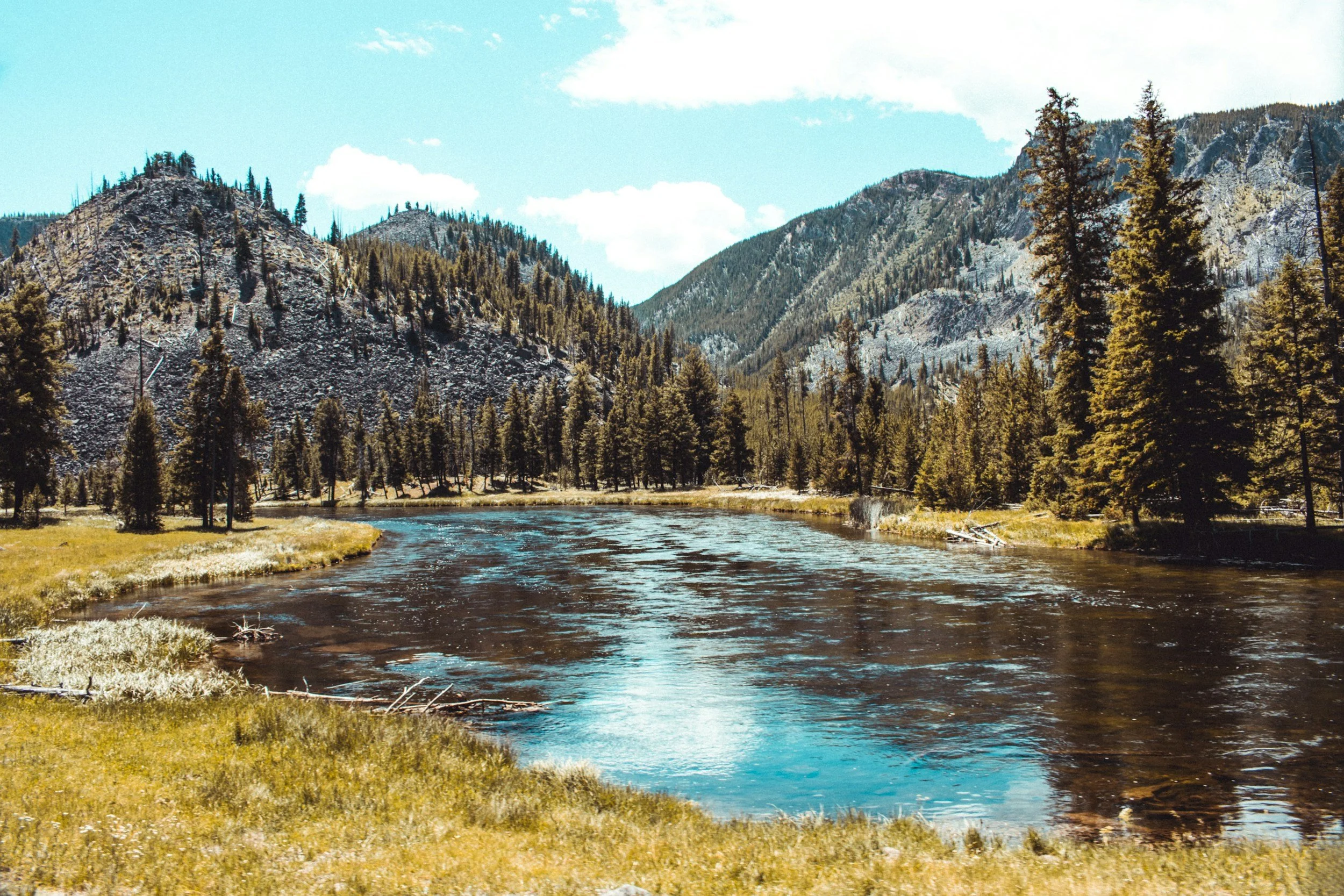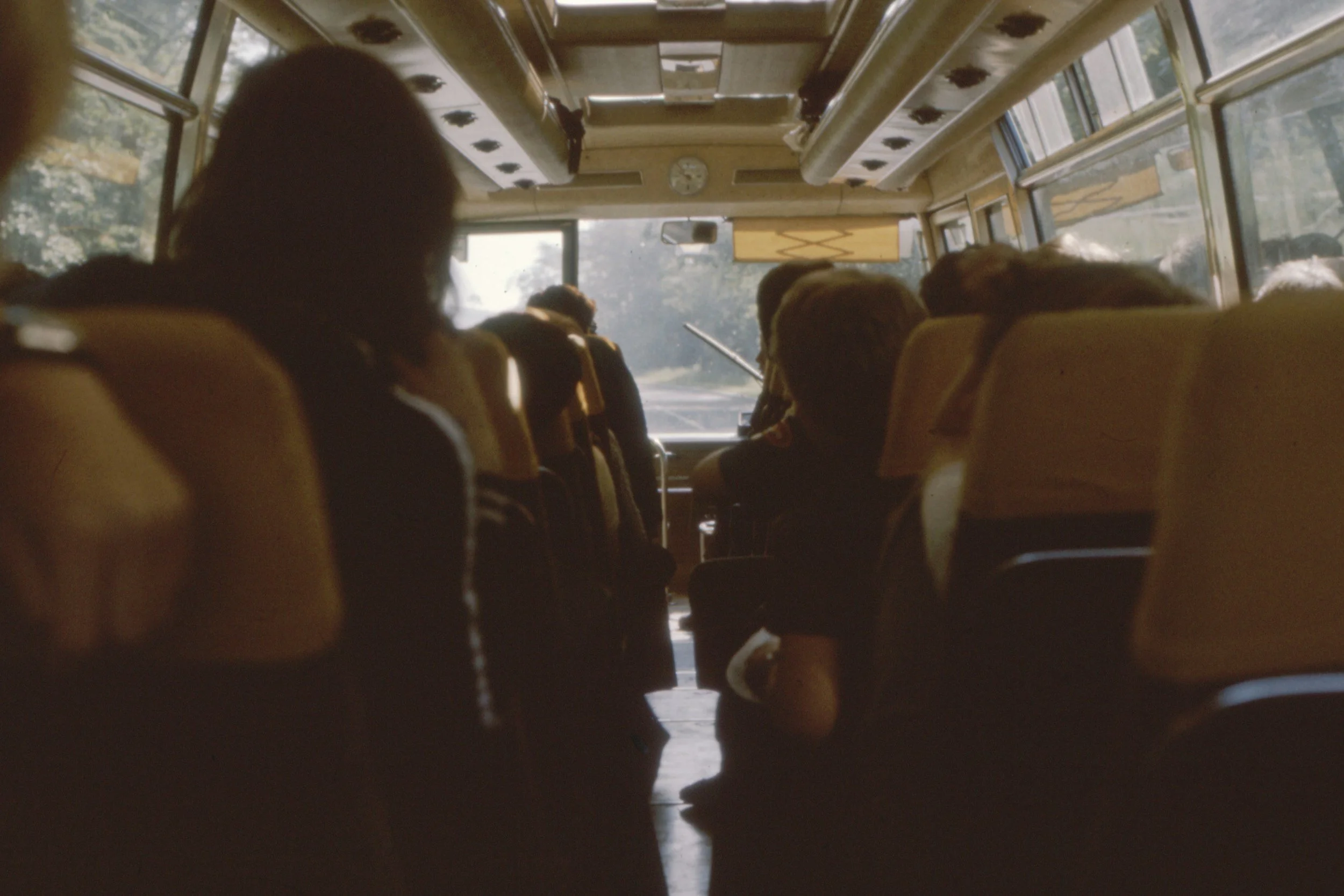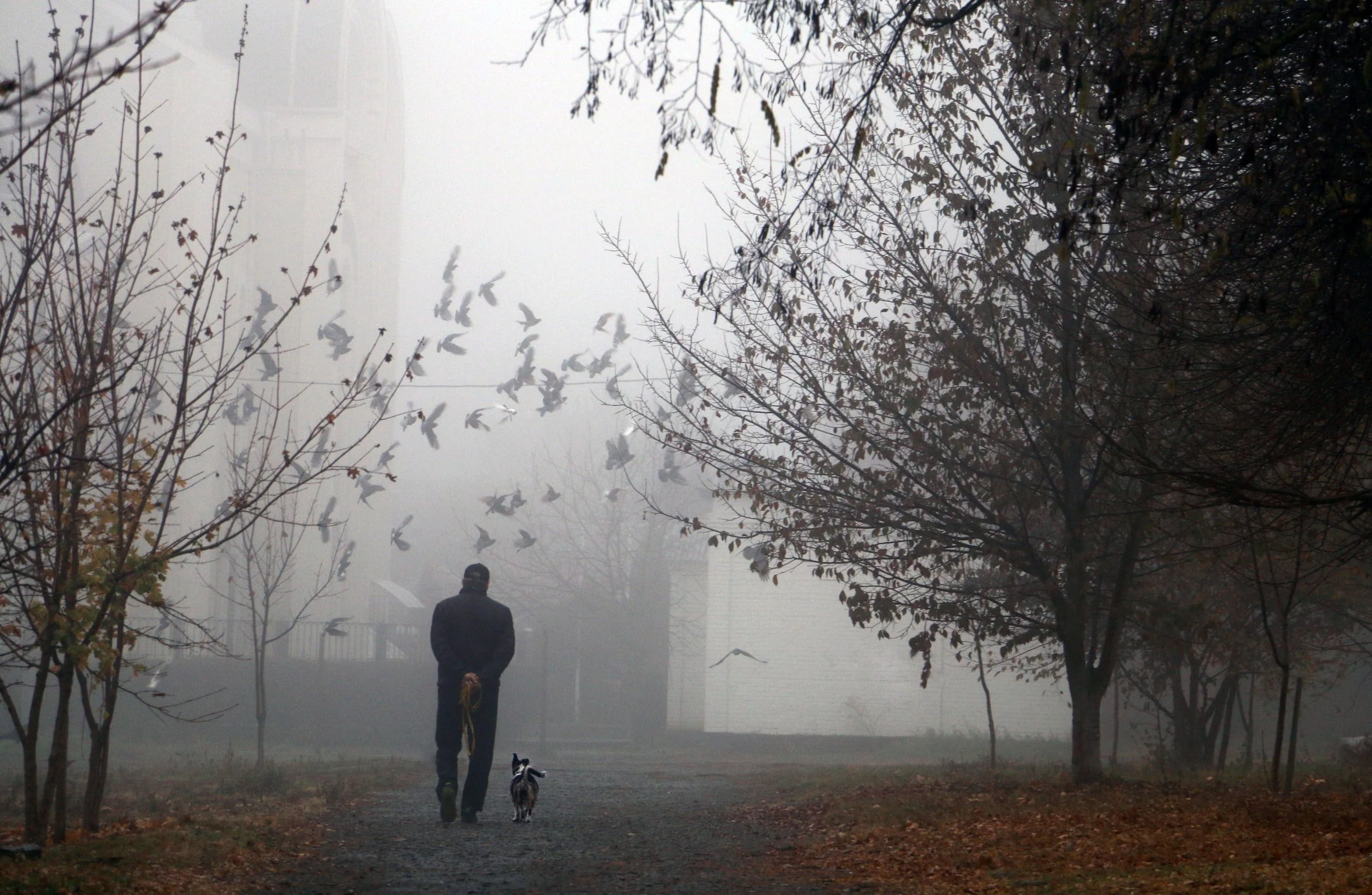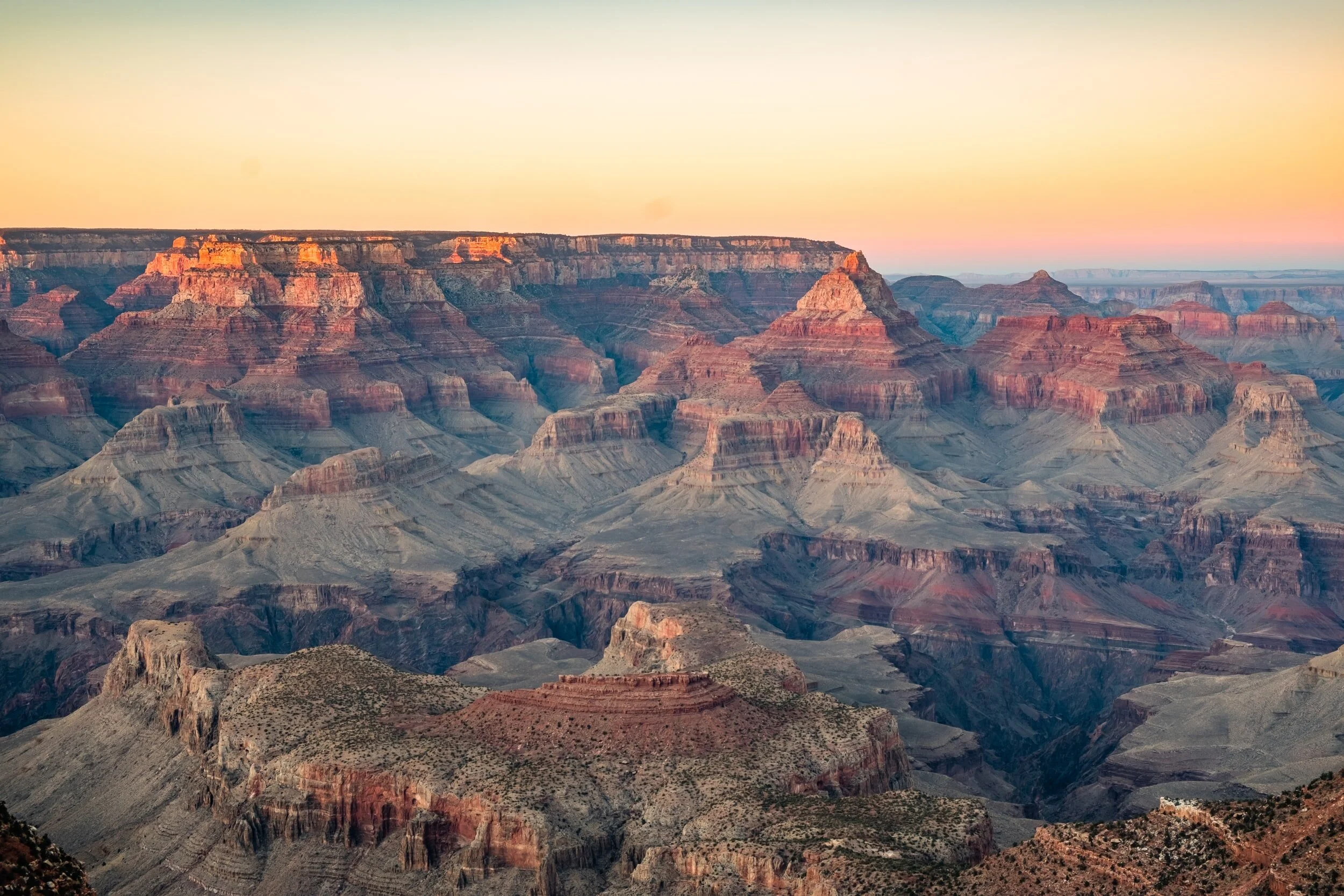How to Climb a Fourteener When You’re Afraid of Heights
I balanced on the side of Mt. Yale, quietly crying into my knees. Rory hopped from stone to stone ahead of me, following my husband, Julio. Between only weighing thirteen pounds (mostly fluff) and having the start of cataracts—and being a dog—Rory did not notice the four thousand-foot drop on the other side of the rocks. Once she realized I was no longer a step behind her, she came plopping back to where I froze and wiggled her way onto my lap. Panting and licking my face, in her obliviousness, Rory pulled me out of my panic and helped me make it the rest of the way to Mt. Yale’s fourteen thousand two hundred-foot summit. I had stopped just a short scramble from the top because the trail was more exposed than I expected, and I was sure I would slip and plummet to my death. Predictably, I did not.
Hiking a fourteener, a mountain peak over fourteen thousand feet, is a quintessential Colorado activity, but I am what Coloradans call a flatlander. My Northeast Indiana home is so flat that my dad used to say he could just picture the ancient glaciers rolling out anything in their path. The first time I hiked in Colorado, I was visiting Julio in Boulder and he tried to take me up the first Flatiron, one of the mountains that give the city its iconic backdrop. A light dusting of snow covered the trail, and at one switchback, Julio had to pick me up and move me a few feet further down the trail because I was clinging to a tree for dear life. There was barely any incline and nowhere to fall, but you would have thought I was inches from sliding off a precipice. The problem was not my Hoosier origins, but my deep fear of heights, born from lifelong recurring dreams of falling—the type of dream that jolts you awake with the sensation of crashing down onto the mattress.
A few years after my Flatiron meltdown, I moved to Colorado to join Julio, and he took me up my first fourteener—Mount Bierstadt, a good beginner hike. The trail is just under eight miles out and back, but not technically difficult, aside from some brief scrambling toward the top. Successfully summiting that mountain turned me into a hiker. During the next three summers, I summited 15 unique fourteeners and twenty-three summits total, despite my fear of heights.
The thrill of making it to a peak that high, combined with how beautifully exhausted I felt at the end of the hike, compelled me to try more. Each summit provides unique rewards. On Mount Elbert, I stood at the top and reached my arms as high as I could. My fingertips marked the highest point in the state for that moment. All it took was a ten-mile hike with an elevation gain of four thousand one hundred feet for a total of fourteen thousand four hundred and thirty-eight feet, plus me.
I am sure that hiking a fourteener is easy for some people. Some run up and down them. For most humans, climbing a mountain is not easy work, and if you combine it with a fear of heights, the feat is a delicate balance of intrinsic and extrinsic motivation, navel-gazing, and the sublimity of nature. Somewhere in that mixture lies the reason why explorer John Muir wrote, “I only went out for a walk and finally concluded to stay out till sundown, for going out, I found, was really going in.” To hike a fourteener when you are afraid of heights takes more emotional skill than athletic prowess.
To me, the foundational skill to endure fear is putting that feeling in perspective. Today, a hiking kit might include a backpack, boots, spikes, poles, water bottles, a variety of snacks, smart devices, clothing made from fabrics designed to endure wear and weather, and a car to get to the trailhead. But people have been climbing fourteeners for at least two hundred years, with much less information and equipment. On July 14, 1820, Edwin James made the first recorded ascent of a fourteener in the United States, summiting Pikes Peak. Now you can drive to the top and buy a doughnut.
In 1933, Mary Cronin became the first woman on record to summit a fourteener. An accountant from Denver, Cronin ascended the duo of Mt. Belford and Mt. Oxford. Having hiked all three of these mountains, I think that Belford and Oxford are much harder than Pikes Peak. In trickier spots on the trails, it helps me to think about those who have gone before me, both recorded and hikers unknown. I am pretty average, not exceptionally good at hiking, but also neither clumsy nor careless; if all of those people can survive this hike, I can too.
On a practical level, you have to learn to trust your feet. Especially on scree or slopes, I feel as though the ground is not going to hold me—that my feet are going to let me down. It helps to place my feet down dramatically when I start to feel unsure. I push pressure into the soles of my boots. “I am here,” I breathe. I think that micro-spikes do not help as much as poles, but when there is snow or ice, they are a good safety measure. Trusting your feet is essential, but what that means is personal. Each hiker has to feel the ground beneath their own boots.
Once above the tree line, as the hike gets more technically difficult, the trail puts physical and emotional endurance to the test. I find the extrinsic motivation to keep going in the form of a summit beer, as Julio and I have a tradition of sharing one at the top of a fourteener. When the false summits show up and it feels like we will never finish hiking, knowing that the beer is just a few hundred feet of climbing away helps. Eventually, however, that motivator will not be enough and I have to get stubborn, realizing that I have come too far not to finish, so I better just keep climbing.
Toward the summit, having a friend or partner who is not afraid helps me figure out where to go and how hard the hike is outside the cloud of my anxiety. It is almost always harder in my head. In addition to Julio, during those intense fourteener summers, I always brought Rory along. Rory has since retired from hiking due to arthritis, but she got a lot of attention on the trails because of her petite size. Rory has her share of neuroses, but a fear of heights is not one of them. As she blithely bounced from rock to rock, she diminished my angst.
On the outside, hiking culture focuses on human achievement, sweet gear, and selfies. Actually, hiking a fourteener is intensely about nature. Or at least it should be. From more than fourteen thousand feet high, national forests and ridges of the Rockies are visible for miles. The quality of the air is apparent. On some days, visibility is astonishingly clear. On others, the layer of pollution hanging over our homes tarnishes the view. The cliche that we are small compared to nature is obviously true on the side of a mountain. Taking in the views helps clear the head of all the self-involved reasons we might hike (from athletic pride to selfies), but it also fuels that desire for more summits.
It is easy to forget that the summit of the fourteener is only the halfway point. There is still the hike back to the trailhead to overcome. The hike back is where the advice ‘don’t look down’ falls apart. For me, the way down is much more difficult than the way up. I am sure I will slide down the entire mountain, slipping on scree and going over the edge to my death, dragging Rory behind me. On the way down, once summit fever has broken, I distract myself by looking for wildlife—specifically, mountain goats, who arrive out of nowhere and pose for a few photos before casually walking along the side of a cliff. These mountain mystics are allegedly attracted to human urine, which draws them to the trails. I try not to think of that, focusing instead on the joy their silent appearance conjures. They are surprisingly large, and their ability to scale the side of a mountain makes no sense if you do not know that their feet are one of nature’s best versions of micro-spikes. As I search for mountain goats, I find my way down the mountain, back to the place where I do not feel exposed and like I could fall.
Finally, it helps quiet my fear of heights if I can get distracted by some personal problems. On the way above the treeline, if I can stew over something, that provides more fuel for the hike than any trail mix can. One summer, I grieved a miscarriage, sorting through the mixed feelings of guilt, sadness, and relief it bore. Finding the courage to get over tricky parts of the trail helped me reconnect to my body, working through the feeling that it had betrayed me by losing the pregnancy. The next year, after I had failed to conceive again, I hauled my exhausted body up the trails. I allowed myself to feel free in the expansive national forest around me, seeking some silver lining to motherhood delayed. During my third summer hiking fourteeners, my father died suddenly. I took a month away from work, cashing out all the time off I had saved for maternity leave yet-to-be, and stayed in Indiana with my mom and younger sister. During that time, I ran in the thick humidity of late summer in the Midwest, taking in the vast, flat farms and forests around my hometown. Once I returned to Denver, I needed to be in the mountains again. The fourteeners are not home, but the effort to hike them provided a catharsis, a release from the hard work of planning a funeral and grieving my father.
The emotional fuel for hiking need not be a three-course meal of life-changing situations. I have also hiked my way through frustration with friendship, problems at work, sorting out an autoimmune diagnosis, and family drama, composing tirades about them in my head. The petty issues—emotional junk food—are sometimes the best to hike with anyway. Anger makes a hike go quickly. Sadness makes it more beautiful.
On the way down, the switchbacks to the car feel endless, and a rock jumps up to trip me every twenty feet. Frustrated and grumpy, I find clarity. Exhausted, I find myself thinking, “What a bunch of bullshit. Get over yourself.” I mentally delete the tirades. And that’s the real reason to hike a fourteener, especially if you are afraid of heights. You get the thrill of achievement, the beauty of nature, and a reality check. I am small. I can overcome my fears. And the mountain will be there long after me and my problems. Just keep putting one foot in front of the other.
-Kasey Butcher Santana
Kasey Butcher Santana (she/her) is a writer and caretaker of a small alpaca farm where she and her husband also raise chickens, bees, and their daughter. Kasey earned a Ph.D. in American literature and has worked as an English teacher and a jail librarian. Recently, her work appeared or is forthcoming in Pithead Chapel, Split Lip, Write or Die, Superstition Review, Passengers, and The Hopper. You can follow her on Instagram @solhomestead or on Substack at Life Among the Alpacas.




















